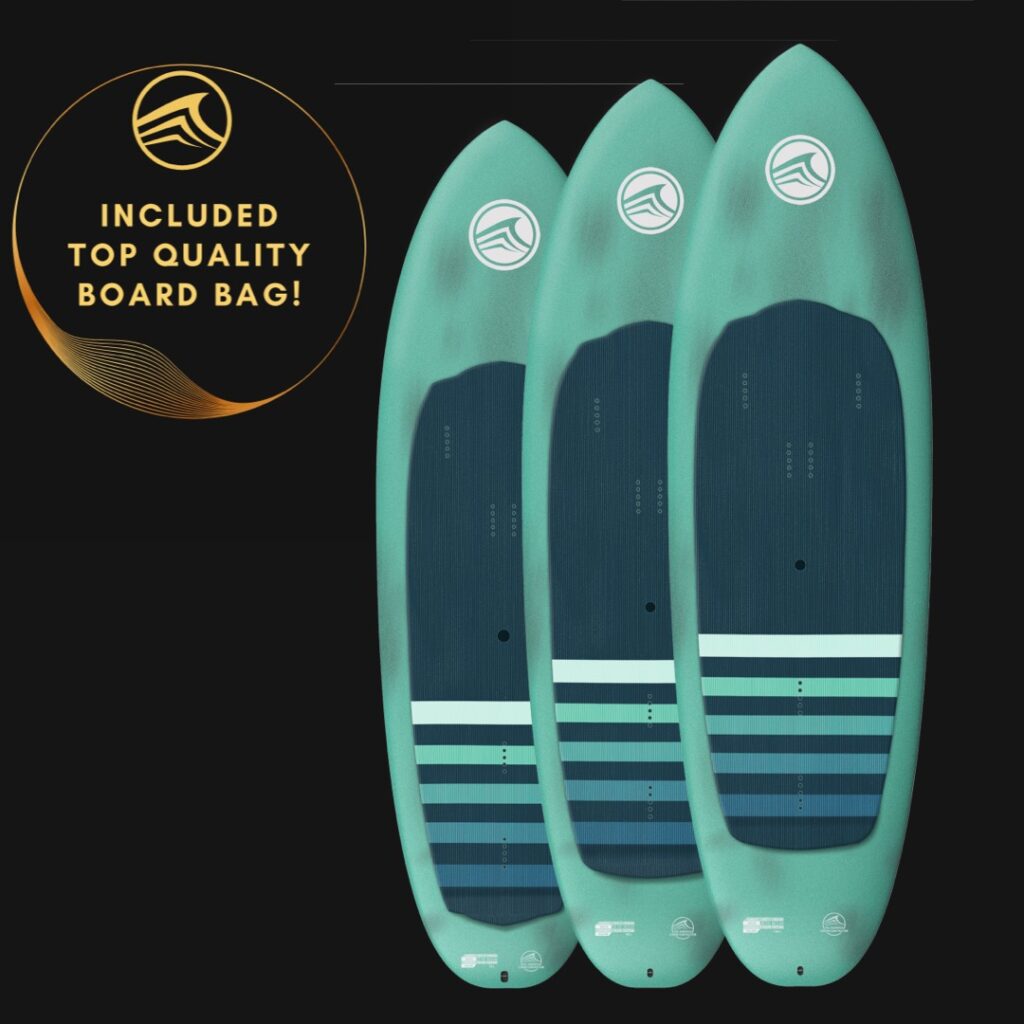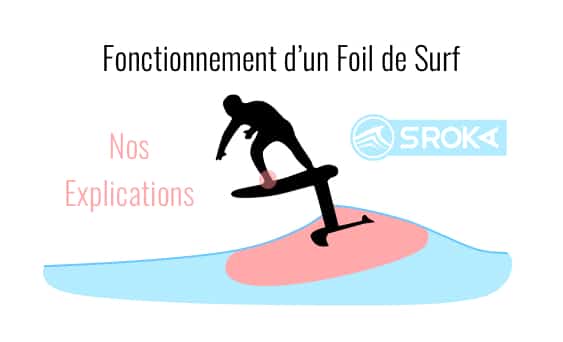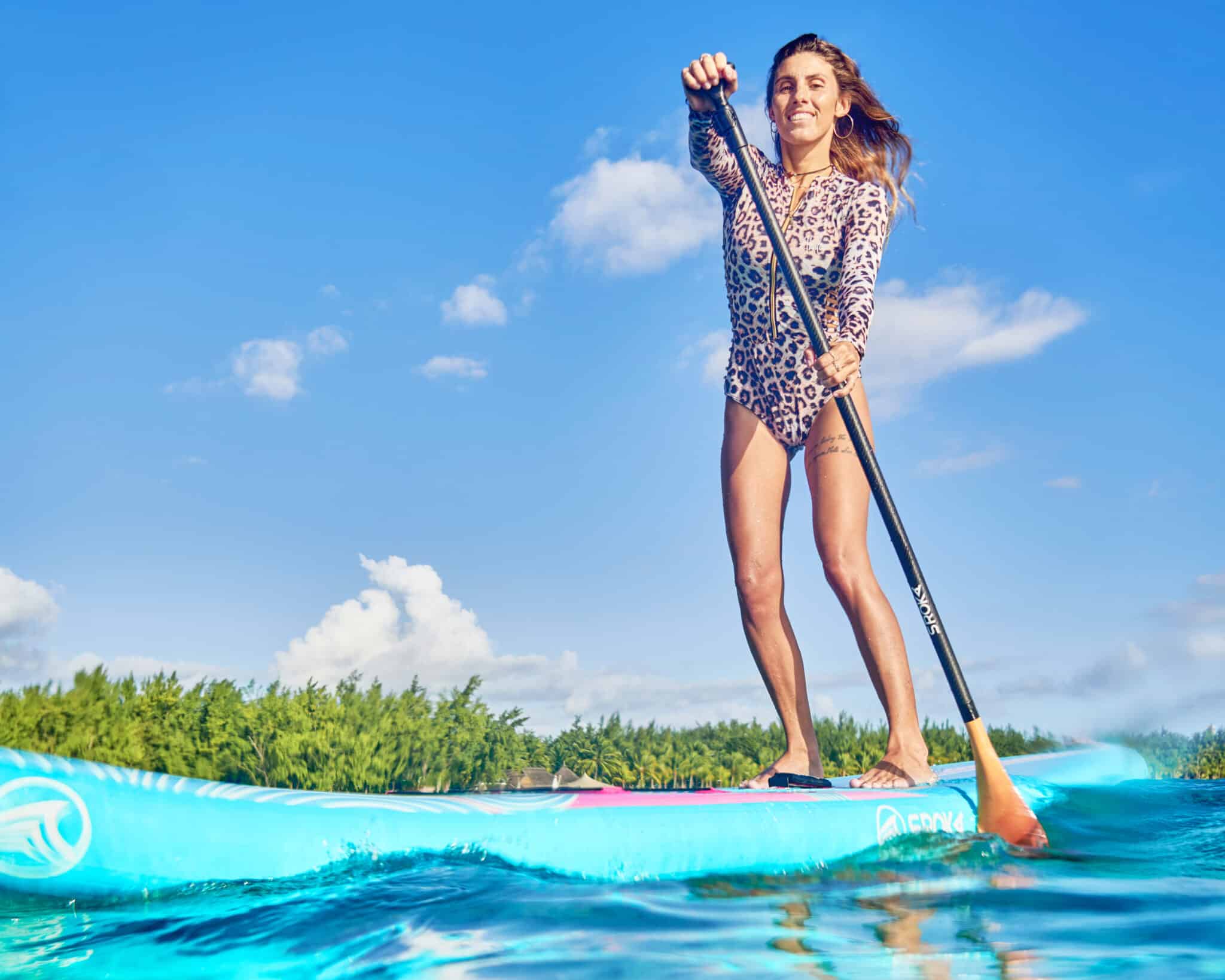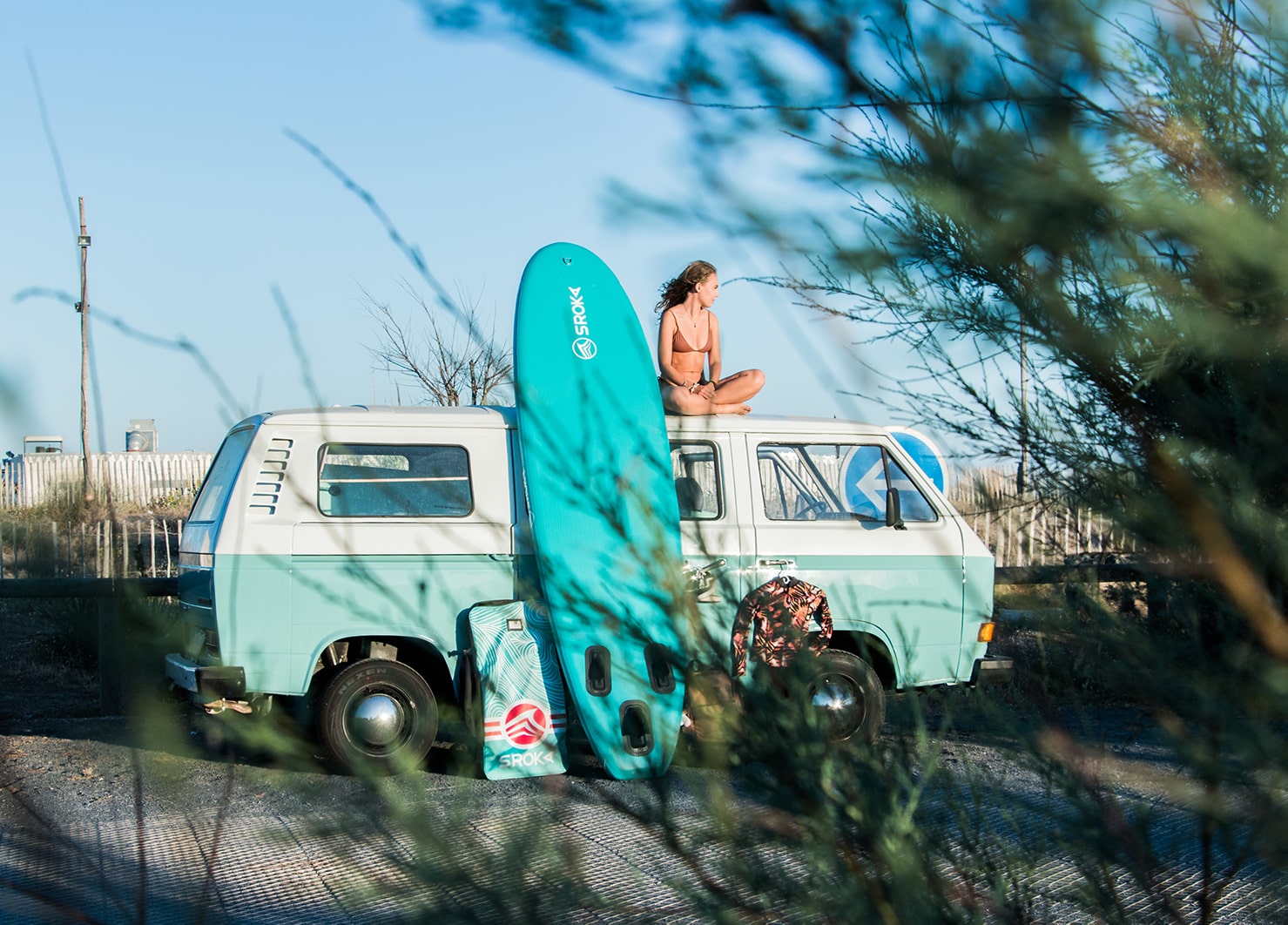Louis-Arnaud surf-foil in Mauritius, equipped with the Fast Flyer 4’6 board and the High Aspect 1190 Lift S-foil Summary Composition of a surf foil Principles …
New Light Wind Wing Foil Board: SROKA’s LW
To be effective in Wing Foil in the Light wind, you have to adapt your equipment to glide better and leave earlier. This requires an appropriate choice of board and foil to optimize the glide as much as possible. So let’s detail all the information you need to know to choose correctly the right board to sail in light wind or even ultra light in Wing foil.
The type of board to sail in light wind in Wing foil
To leave early, you should opt for a long and narrow board. Indeed, the wider the board, the more drag it generates. Reducing drag means increasing the length of the board and decreasing its width.
If we take the example of paddle boards. The longer and thinner the paddle and the more the paddle will slide, conversely the shorter and wider the paddle will be and the more the paddle will turn but slide less.
Based on this premise, if you want to start very early, you need to choose the right board: long and narrow.
But why?
Drag in water is 800 times greater in water than in air. It is proportional to the frontal contact area of the board in the water. So the wider the board, the bigger the area of friction with the water will be. So basically, a wide and shorter board will glide less well than a long and narrow board.
Drag is also proportional to velocity squared. So the more you want to accelerate, the more a wide board will increase its drag and consequently have difficulty accelerating.
In our range, we have two types of boards that could allow you to sail in very light wind (between 5 and 10 knots).
Firstly, the LW “light wind” range is a range predestined to sail in this very light wind. The LW will also excel in stronger winds in race or in long-distance freeride and surf wing in light winds.
Secondly, there is the DW range which will be even longer and will allow you to set off even more in very light winds. But it will be more suitable for downwind and light wind.
There are two sizes of board to do light wind in Wing foil and downwind with a paddle or wing wing.
- 7’2W x22 x 130 L
- 7’2x20x 110 L
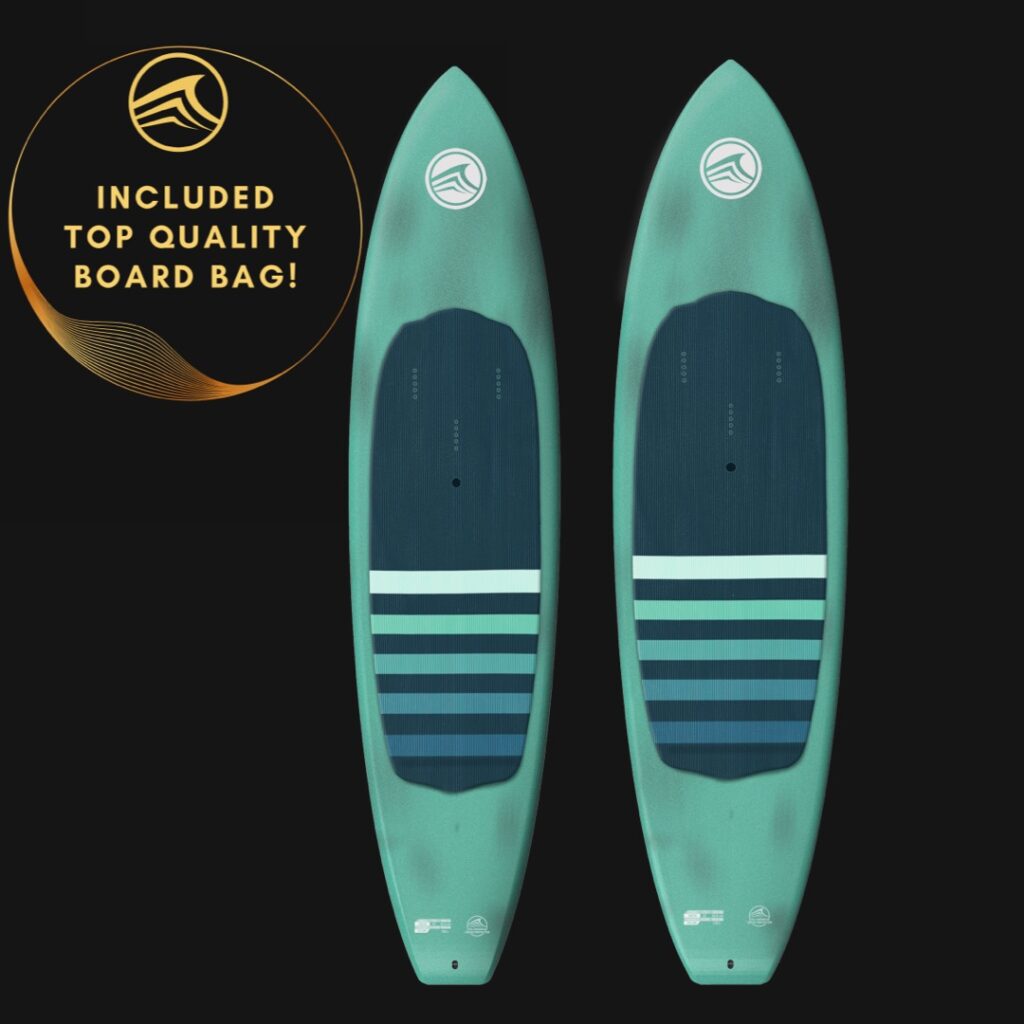
Personally, to choose the right type of board, I will set up this methodology
- If you want to do only light wind, downwind in wing and a little wing foil in the waves in light conditions or do a little prone, I will opt for the LW range
- If you want to do light wind, downwind in wing and/or Sup foil (with a paddle) or if you want to do Sup foil in the waves, I will opt for the DW range
Of course, start with a foil that is a little more generous at the start to make it easier to learn. If your technique is on top, then you can choose smaller front wings to maximize glide and speed feelings.
How to sail in light wind with a wing foil?
A bit of Starting Technique:
- Go almost to a standstill. Pump with your wing to gain horizontal speed. Don’t try to fly right away, focus on horizontal speed at first.
- Then, when you feel you have enough horizontal speed, give 2 push-ups obliquely to use the lift of the wing to lift the board out of the water. At the same time, pump with your feet to help with take-off.
Learn to fly with a minimum of distance:
- The key is to learn how to fly in a gust of up to 5 meters. This means you need to take off quickly and efficiently. Over a short distance, you will have to give all your energy to take off. If you have to pump a long distance, it’s almost impossible. So save your energy to give it your all at the right time.
- Store power in your wing. If your wing comes back to you too quickly during the pumping, it means that the wing has not stored enough power. You have to adapt the way you pump. Forward-to-back arm movements do not work. Instead, you should do figure-8s with your arms, especially in light winds.
- Finally, take off on the right foot (regular or goofy) if you have a preferred side to pump, start on the right side.
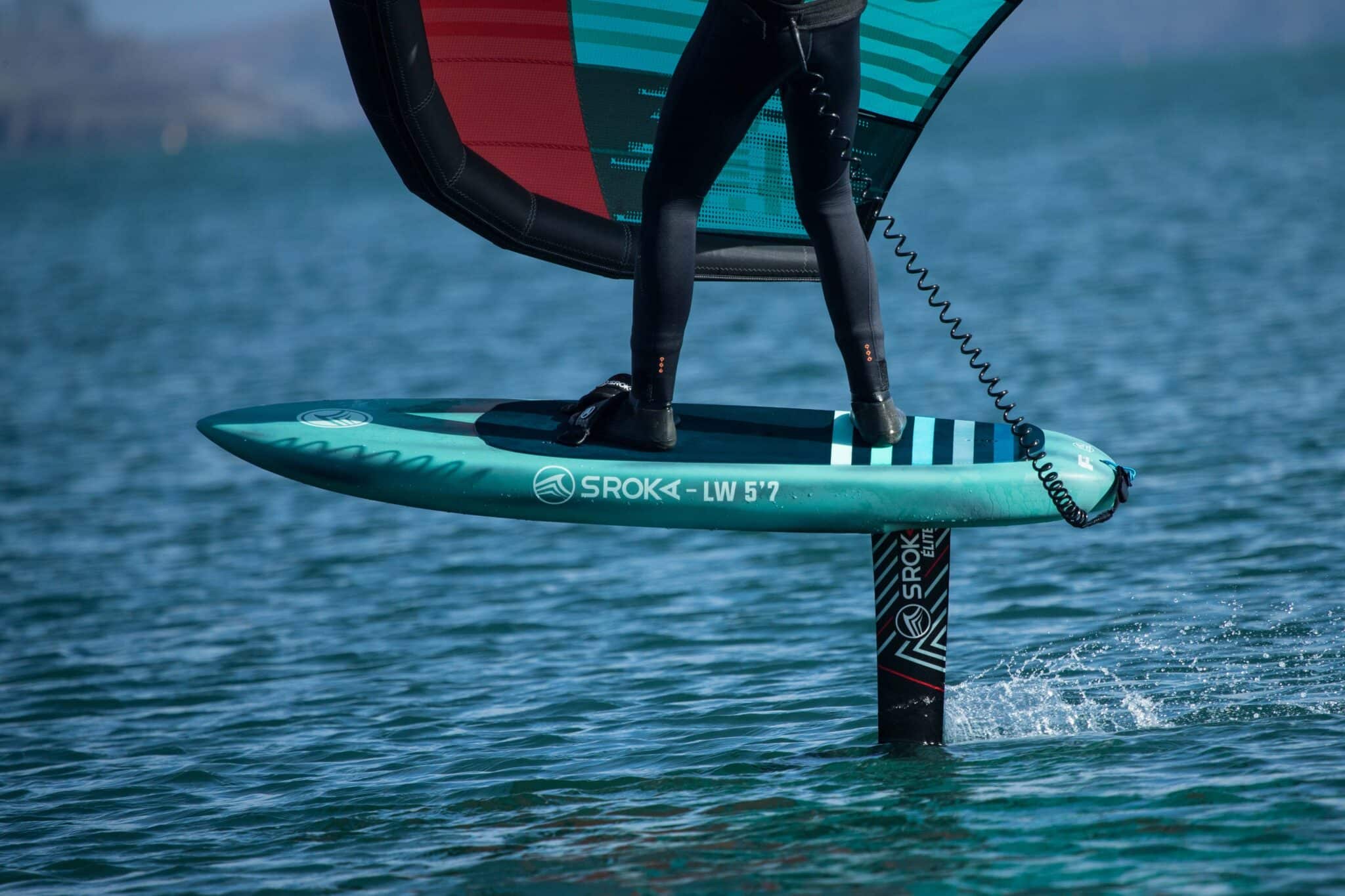
Observation and Anticipation
When you want to wing foiler in light wind, pay attention to micro gusts. It is necessary to constantly anticipate soft winds or gusts. It is easier to pump with the gust than without the gust. And during the flight, if you observe in front of you a soft wind that is forecast in front of you, you have to start pumping with the wing and/or the board to get past the no-wind zone. On the other hand, if you observe a gust in front of you, you will be able to accelerate and go upwind to gain ground to the wind to be comfortable if a slump occurs afterwards. The reading of the body of water is therefore fundamental.
Energy & Technology:
- To improve your technique, choose a calm body of water to make it easier to learn how to sail in light wind in Wing foil.
- Wing foil pumping in light wind and chop is much more technical because the chop will block the horizontal speed of the board. So train to improve your technique to go in all conditions.
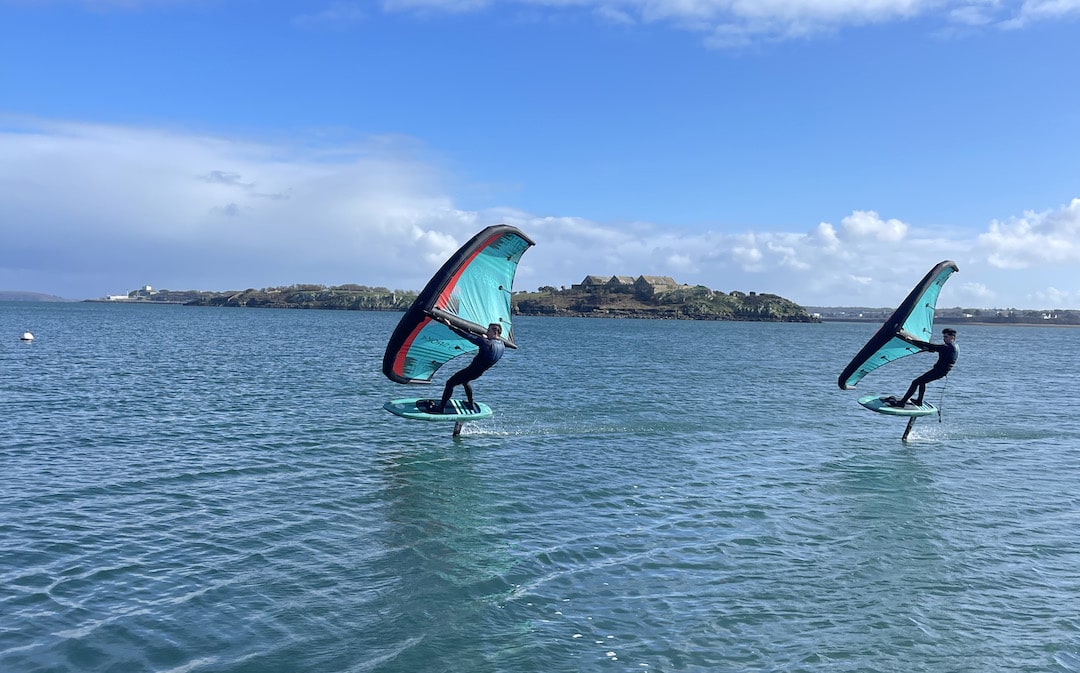
Flying in light wind in Wing foil requires a real learning curve. Those who are strong in strong winds are not necessarily strong in light winds. You have to adapt your technique and improve your efficiency and you have to adapt your equipment.
The opportunity presents itself to stand out, choosing to fly before others in light allows you to save many sessions, especially for our friends who sail in inland waters.
If you still have questions about this, or for any other request, please do not hesitate to contact us !
Article you may be interested in
Did you know that paddle boarding is a great way to strengthen your body? Not only does this activity allow you to escape on the …
Are you looking for an inflatable paddle board for the summer to sail at sea or in lakes? The inflatable paddle board really has a …
What is Wing Foil? Wing Foil is the latest in board sports. This consists of manipulating a wing held with both hands (“wing”) with a …

